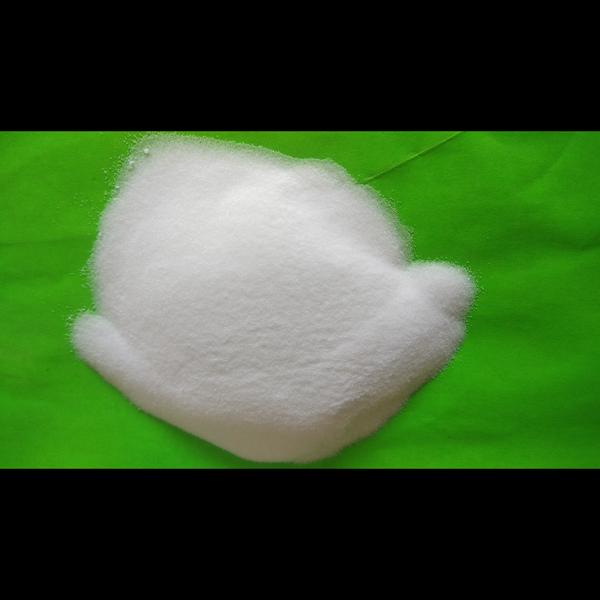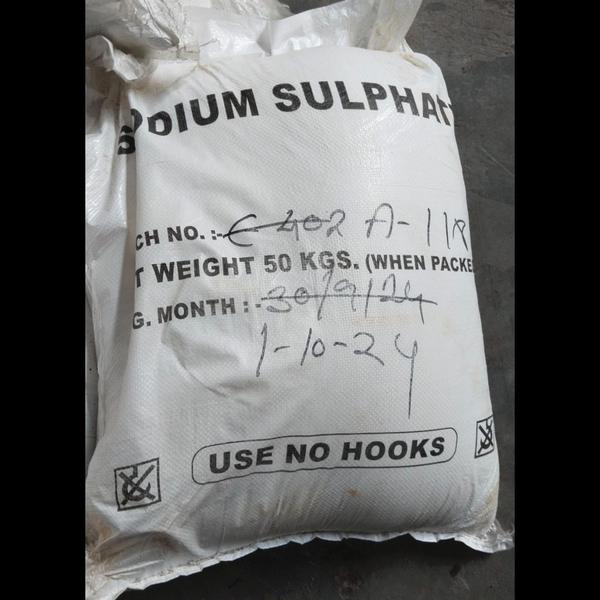Sodium Sulphate (Na₂SO₄) – Detailed Properties
Sodium sulphate, also known as disodium sulphate, is an inorganic salt with the chemical formula Na₂SO₄. It is commonly found in its decahydrate form (Na₂SO₄·10H₂O), known as Glauber’s salt, and in its anhydrous form, which is a white crystalline solid. Below are its detailed properties, categorized into physical, chemical, and industrial characteristics:
🔹 1. Physical Properties
Property Description
Chemical Formula Na₂SO₄
Molar Mass 142.04 g/mol (anhydrous)
322.20 g/mol (decahydrate)
Appearance White crystalline solid (anhydrous)
Transparent crystals (decahydrate)
Odor Odorless
Taste Saline and bitter
Density 2.68 g/cm³ (anhydrous)
1.464 g/cm³ (decahydrate)
Melting Point 884 °C (anhydrous, decomposes)
32.4 °C (decahydrate, loses water)
Boiling Point Decomposes before boiling
Solubility in Water 20 g/100 mL at 20°C (moderately soluble)
Solubility in Other Solvents Insoluble in ethanol and most organic solvents
Crystal Structure Orthorhombic (anhydrous)
Monoclinic (decahydrate)
🔹 2. Chemical Properties
Property Description
Nature Neutral salt (neither strongly acidic nor basic)
Hygroscopicity Anhydrous form is hygroscopic (absorbs moisture from air)
pH of Aqueous Solution Around 7 (neutral)
Thermal Stability Stable up to high temperatures; decomposes slowly at very high heat
Reactivity - Stable under normal conditions
- Can react with strong acids to form sodium bisulfate or sulfuric acid
- Does not react with most oxidizing or reducing agents
Decomposition Products At high temperatures, may release toxic sulfur oxides (SO₂, SO₃)
🔹 3. Industrial & Functional Properties
Property Description
Non-Toxicity Considered non-toxic in moderate amounts
Biodegradability Environmentally benign, especially in detergent applications
Drying Agent Used in laboratories and industries as a drying agent (anhydrous form)
Electrolyte Behavior Used in various electrochemical processes
Fluxing Agent Helps in removing small particles of impurities in glass manufacturing
🔹 4. Common Forms
Form Description
Anhydrous Sodium Sulphate Used as a drying agent, in detergents, and glass manufacturing
Decahydrate (Glauber’s Salt) Used in thermal storage, textiles, and traditional medicine
Heptahydrate / Other Hydrates Less common; exist under specific conditions
🔹 5. Applications Based on Properties
Detergent Industry: As a filler due to its inertness and ability to improve texture.
Glass Manufacturing: Acts as a fining agent to remove air bubbles.
Paper and Pulp: Used in the Kraft process to produce wood pulp.
Textiles: Assists in dye fixation and textile processing.
Thermal Storage: Glauber’s salt is used in phase change materials due to its heat storage capability.
Laboratory Use: Anhydrous form is used to remove traces of water from organic solutions.
🔹 Safety & Handling
Aspect Detail
Toxicity Low toxicity; large ingestion may cause nausea or diarrhea
Handling Use gloves and goggles for industrial use to avoid irritation
Environmental Impact Generally safe but large discharges in water may affect aquatic ecosystems



